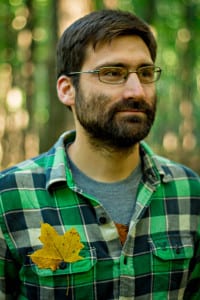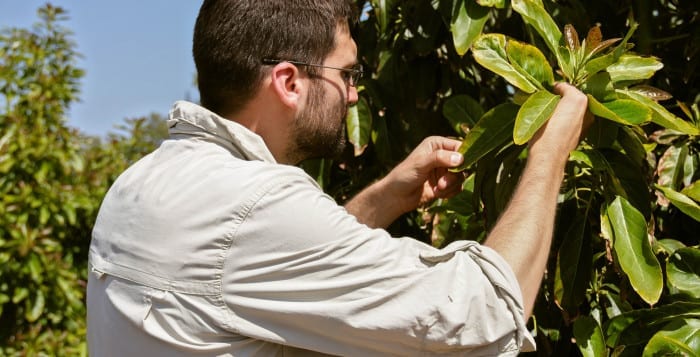While judging a book by its cover may be misleading, judging a forest by looking at the top of the canopy can be informative. What’s more, that can be true even from satellite images.
An expert in a field called “remote sensing,” Shawn Serbin, an assistant scientist at Brookhaven National Laboratory, takes a close look at the spectral qualities of trees, gathering information that generates a better understanding of how an area responds to different precipitation, temperature and atmospheric carbon dioxide.
Serbin is “on the cutting edge” of this kind of analysis, said Alistair Rogers, a scientist at BNL who collaborates with and supervises Serbin. “He’s taking this to a new level.” Serbin and Rogers are a part of the BNL team working on a new, decade-long project funded by the Department of Energy called Next Generation Ecosystem Experiments — Tropics.
The multinational study will develop a forest ecosystem model that goes from the bedrock to the top of the forest canopy and aims to include soil and vegetation processes at a considerably stronger resolution than current models.
The NGEE Tropics study follows a similar decade-long, DOE-funded effort called NGEE-Arctic, which is another important biological area. Serbin is also working on that arctic study and ventured to Barrow, Alaska, last summer to collect field data.

Working with Rogers, Serbin, who joined BNL last March, said his group will try to understand the controls on tropical photosynthesis, respiration and allocation of carbon.
Serbin uses field spectrometers and a range of airborne and satellite sensors that measure nitrogen, water, pigment content and the structural compound of leaves to get at a chemical fingerprint. The spectroscopic data works on the idea that the biochemistry, shape and other properties of leaves and plant canopies determine how light energy is absorbed, transmitted and reflected. As the energies and biochemistry of leaves changes, so do their optical properties, Serbin explained.
“Our work is showing that spectroscopic data can detect and quantify the metabolic properties of plants and help us to understand the photosynthetic functioning of plants, remotely, with the ultimate goal to be able to monitor photosynthesis directly from space,” Serbin said.
NGEE-Tropics, which received $100 million in funding from the DOE, brings together an international team of researchers. This project appealed to Serbin when he was seeking an appointment as a postdoctoral student at the University of Wisconsin, Madison. “It’s one of the reasons I was happy to come to BNL,” Serbin said. “To have the opportunity to collaborate closely with so many top-notch researchers on a common goal is incredibly rare.”
The tropics study includes scientists from the Lawrence Berkeley National Laboratory, Los Alamos, Oak Ridge and Pacific Northwest national laboratories and also includes researchers from the Smithsonian Tropical Research Institute, the U.S. Forest Service, the National Center for Atmospheric Research, NASA and numerous groups from other countries.
In the first phase of this 10-year study, scientists will design pilot studies to couple improvements in computer modeling with observations in the tropics. These early experiments will include work in Manaus, Brazil, to see how forests react to less precipitation. In Puerto Rico, researchers will see how soil fertility impacts the regrowth of forests on abandoned agricultural land.
Serbin expects to work in all three regions. He plans to do some pilot work early on to identify how to deal with the logistics of the experiments.
“These are designed to ‘shake out the bugs’ and figure out exactly how we can do what we need to do,” he said.
Serbin lives in Sound Beach with his partner Bethany Helzer, a freelance photographer whose work includes book covers and who has been featured in Elle Girl Korea and Brava Magazine. The couple has two cats, Bear and Rocky, whom they rescued in Wisconsin. Helzer has joined Serbin on his field expeditions and has been a “trooper,” contributing to work in California in which the couple endured 130-degree heat in the Coachella Valley.
“Having her along has indeed shown that when you are in the field and focused on the work, you can miss some of the beauty that surrounds you,” Serbin said.
Serbin said the NGEE-Tropics work, which has involved regular contact through Skype, email and workshops, will offer a better understanding of a biome that is instrumental in the carbon cycle. “Our work will directly impact future global climate modeling projections,” he said.





